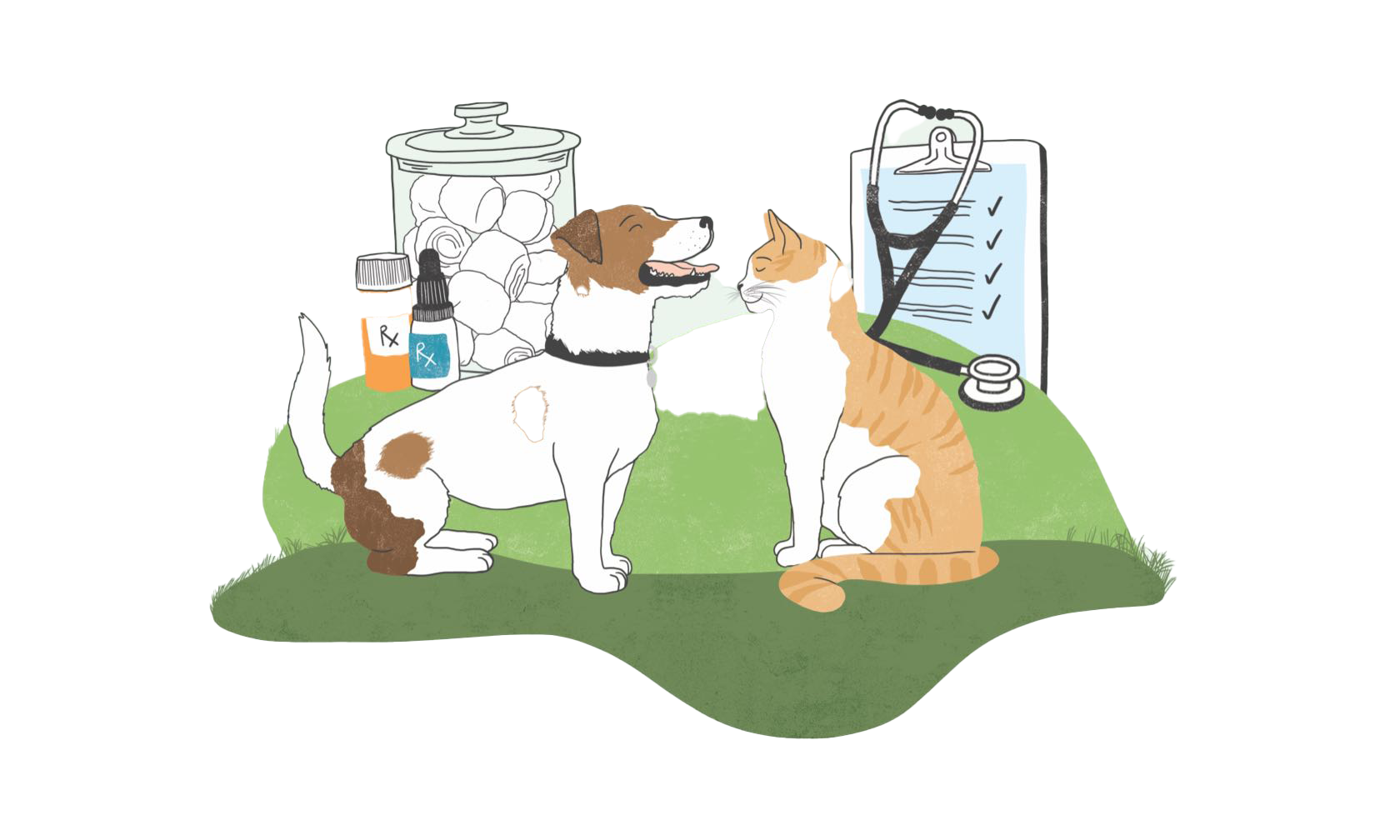Cats and dogs have respiratory systems much like our own, which means the air they breathe affects them in many of the same ways it affects us. When air quality drops (due to wildfires, smog, or other pollutants) our pets are just as vulnerable to respiratory issues as we are. Understanding how air pollution impacts your pet’s health is key to keeping them safe when the air isn't clean. Air pollution can occur both outside and inside the home. Indoor air pollution can be caused by building materials, cleaning products, and tobacco smoke. Outdoor air pollution is a little more complicated because it can be caused by so many different contaminants, like criteria pollutants, air toxics, and ozone issues.
What Are the Effects of Air Pollution on Animals?
Air Pollution and Dogs
Studies of dogs exposed to air pollution show long-term changes to the lungs, such as emphysema, chronic bronchitis, and scarring.1
Emphysema and bronchitis are conditions included in chronic obstructive pulmonary disease (COPD), which is an irreversible inflammatory condition. Signs of COPD include coughing, gagging, wheezing, and difficulty breathing.
Scarring in the lungs, also known as pulmonary fibrosis, can have signs that are similar to COPD, like cough, shortness of breath, and exercise intolerance.
If you notice that your dog is coughing often, it’s best to have a veterinarian take a look.
Indoor air pollution can also cause different types of cancer in dogs.
Air Pollution and Cats
In cats, indoor air pollution was associated with a wide variety of chronic airway diseases such as asthma, chronic nasal inflammation, and cancers.2
Since cats typically stay indoors more often than dogs, they tend to suffer the effects of indoor air pollution more often than outdoor, but aren’t immune to pollution that happens outside.
How the Air Quality Index Can Help
Let’s talk about ways to minimize your pet’s risk on high air pollution days.
In areas at risk for high pollution, the weather service will release an Air Quality Index. This number scale warns people to stay inside and refrain from exercising on days when pollution levels are high and unsafe. The warning also applies to our pets and can be a great reference before your morning walk.
Pets Most at Risk of Harm from Air Pollution
If the Air Quality Index is very elevated, all pets are at risk of harm from air pollution. Certain pets may be at risk of even lower levels of air pollution:
- Brachycephalic pets (flat face, short nose)
- Pets with underlying heart disease, such as a severe heart murmur or congestive heart failure
- Pets with underlying lung disease or breathing issues, such as asthma or a long-term cough
- Pets younger than four months old
Possible Signs Your Pet is Being Impacted by Air Pollution
Please contact your veterinarian if you see any of these signs in your pet:
- Tiredness or reduced ability to exercise or play
- Eating or drinking less than usual
- Nasal discharge
- Red, swollen, or watery eyes
- Coughing, possibly with gagging
- In cats, coughing that looks and sounds like they are bringing up a hairball, although nothing comes up
Your pet should be seen by a vet immediately if they have any of these more serious signs:
- Frequent coughing that prevents rest
- Breathing faster than 40 breaths per minute while at rest, increased effort when breathing, or noisy breathing
- Trouble walking or disorientation
- Blue, purple, or pale gums
Precautions for Pets in High Air Pollution Areas
For anyone living in an area that typically has high air pollution, there are plenty of ways to minimize their risk.
- Schedule outdoor breaks during the best-expected air quality of the day.
- Use high-quality HVAC filters.
- Consider an air purifier with a HEPA filter.
- Keep your pets mainly indoors.
Precautions for Pets During High Air Pollution Days
Whether you live in an area with a low or high AQI, these tips can help get your pet through a bad pollution day.
- During air quality alerts, keep your pets indoors (even if they’re primarily outdoor pets) with trips outside only to pee and poop.
- Potty pads or indoor grass setups may be very helpful for small dogs on days with very poor air quality.
- When it’s very dusty outside (which can contribute to air pollution), wipe down your pet’s face and coat with a damp washcloth when returning indoors so they don’t lick the dust particles.
- Keep doors and windows closed.
If there’s any concern about the air quality inside your home, limit your pet to low-energy activities so they aren’t doing a lot of heavy breathing.
How to Fight Indoor Boredom on High Air Pollution Days
All of us get cabin fever after a few days cooped up indoors. Dogs and cats are no exception. A bit of preparation will help everyone stay sane and limit the possibility of unwanted behaviors and stress. There are plenty of indoor activities for dogs and games for cats and dogs to keep them happy and entertained.
ZPC-04434
- Long-term canine exposure studies with ambient air pollutants. National Library of Medicine. https://pubmed.ncbi.nlm.nih.gov/8730022/. Accessed February 12, 2024.
- Association between indoor air pollution and respiratory disease in dogs and cats. National Library of Medicine. https://www.ncbi.nlm.nih.gov/pmc/articles/PMC5980393/. Accessed February 12, 2024.



